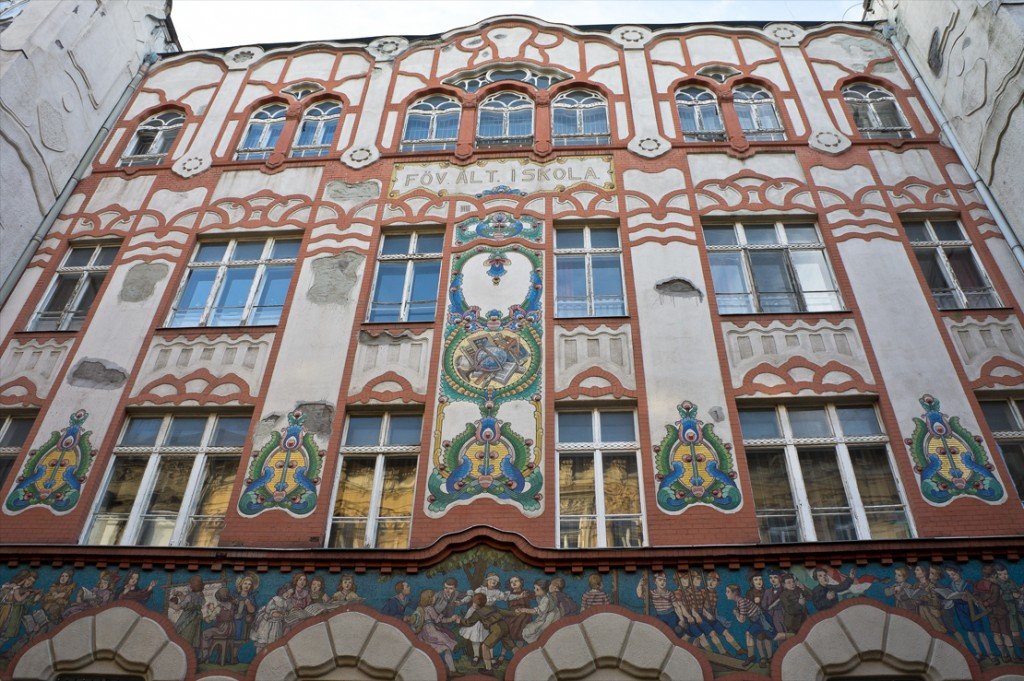#4930. Ornamental façade of Hungarian school in Secession style: synthesis of national motifs and Art Nouveau
The image showcases a magnificent example of Hungarian Art Nouveau (Secession) — the façade of the "Fővárosi Iskola" (City School) building. The façade demonstrates the decorative richness and stylistic abundance characteristic of the early 20th century.
The architectural composition of the façade is built on a rhythmic alternation of windows framed by exquisite terracotta elements. The upper tier is adorned with arched windows featuring curved lines typical of the Secession style. The central part of the façade is accentuated by the inscription "FŐVÁROSI ISKOLA," executed in a stylized font of the era.
Of particular value is the polychrome ceramic cladding, richly decorated with ornamental motifs. The color palette is dominated by white, terracotta, blue, and green. The lower tier is adorned with a panoramic frieze featuring figurative scenes, presumably depicting folk motifs and scenes from the history of education. This element is placed above the arcade of the first floor, creating an expressive contrast with the upper floors.
The façade design shows the influence of the National Romantic movement in architecture, characteristic of Hungary and other Central European countries of that period. Decorative elements, including stylized floral and geometric patterns, as well as medallions with emblems, give the building a unique artistic appearance.
The condition of the façade indicates the need for restoration; however, this does not diminish its historical and artistic value as a striking example of Art Nouveau architecture.
